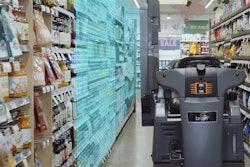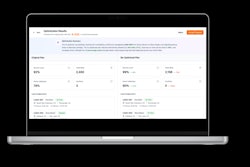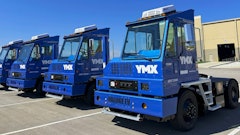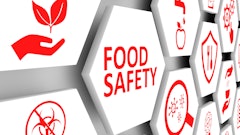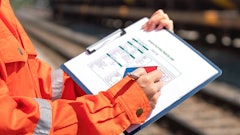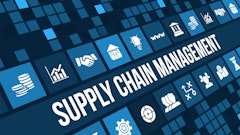
From farms and processing sites to packaging lines, warehouses, and delivery fleets, the food supply chain relies on a vast network of players with logistics providers as the connective tissue. They play a critical role: moving products efficiently, safely, and fully compliant with regulations. Yet, the very complexity that enables this system, like outsourced fleets, subcontracted labor and around-the-clock operations, also creates blind spots that can threaten performance, compliance and customer relationships.
As expectations for transparency rise, brands and retailers are requesting that their logistics partners provide deeper visibility into how transported goods are handled, who is involved, and how providers manage issues such as working conditions and supplier/subcontractor practices. With KPMG research showing that 43% of corporations have no visibility beyond their tier 1 suppliers, despite emissions and other sustainability impacts likely being highest in the supply chain, both logistics companies and their customers have a directive from stakeholders to close the data gap.
It’s a costly disconnect. In 2024 alone, the United States seized more than $1.7 billion worth of goods under the Uyghur Forced Labor Prevention Act, highlighting how substandard conditions hidden in a supply chain can trigger real business impacts.
Food logistics providers face unique visibility challenges
Food logistics providers are faced with growing sustainability data mandates, required to respond to customer visibility requests while also managing networks of their own suppliers, subcontractors and service providers.
Brands are increasingly aware of the ethical and environmental risks in their supply chains, as they gather information in ever-greater detail. In our risk tool, the transport and logistics sector is high-risk for half of the 14 sustainability topics covered, including low wages, excessive working hours, and health and safety concerns. Recent analysis of SMETA data highlights how these issues are then spotted on-site, with over 1,500 serious health and safety issues identified at transport and storage sites in the last three years.
Meanwhile, for operators’ own supply chains, numerous investigative reports from civil society and the media illustrate the ethical risks in industries like vehicle manufacturing, labor contracting, and services including outsourced security and cleaning. These risks can manifest into operational and reputational impact, ultimately with financial consequences - from vehicle or parts delays to a high turnover of contracted or outsourced services staff, requiring constant retraining.
To meet customers’ expectations alongside navigating turbulent market environments at home and abroad, gathering greater intelligence from more of your supply chain is both essential and crucial to continuity. Sedex data also shows how progress on labor and environmental concerns isn’t just possible, but with the right tools, it is also easy to demonstrate to customers. SMETA data indicates, for example, that worksites with a balance of men and women in supervisory and management roles have fewer serious issues identified during on-site audits. What’s more, 4,000 businesses have carried out living wage gap assessments in the last year.
Food logistics' role in multi-tier visibility
As mid-tier players, food logistics companies are often asked to provide data on health and safety, emissions, energy use and subcontractor practices, which requires visibility into who is moving goods and in what circumstances. Logistics companies must be prepared to collect, assess and provide detailed data on how their own delivery partners manage labor conditions, energy use, emissions, subcontracting and other ethical risks.
Data-led tech platforms offer significant support to help mid-tier companies manage supply chain visibility demands more efficiently by centralizing and streamlining data collection. These tools make it easier to gather and share information across sites and subcontractors. They also help flag opportunities to improve internal operations, like reducing worker injury rates or cutting energy costs.
Prioritizing the following efforts help logistics leaders respond to visibility and sustainability data demands more effectively:
1. Talk to both your customers and suppliers about data-sharing requirements. Set objectives and define the processes to reach them together. What data are customers demanding that they want you to obtain from your own suppliers and why? Offering that context to suppliers will help to secure their buy-in. The right solutions facilitate data-sharing across supply chain tiers to streamline this, reducing duplication and making it easier for everyone.
2. Map what matters and unlock the benefits from data insights. Data on energy usage can highlight opportunities to reduce costs as well as emissions, from both your own operations and suppliers. If customers are asking you to make improvements in a particular area such as health and safety metrics, working hours or wages, use your data to illustrate the challenges you face and the support they may need to give.
3. Prioritize high-risk areas. Analyze data by country, sector and topic to pinpoint the labor, safety, and environmental issues that are most likely to surface in your supply chain. This helps you to allocate resources accordingly to start addressing these risks with suppliers.
Why visibility is now essential infrastructure
For food businesses, sustainability and resilience are now inseparable. Extreme weather, geopolitical shifts, and changing regulations continue to test supply chains, but companies that view visibility as a form of infrastructure will be better equipped to manage the uncertainty.
Visibility also strengthens relationships. Sharing operational and supply chain data with customers could help to move their approach from policing to partnership. This transparency also builds trust and lays the foundation for a more collaborative approach to addressing complex sustainability challenges that require support from everyone in the supply chain such as emissions, from Scope 1 to Scope 3.
Visibility is becoming the backbone of effective risk management, as fundamental to continuity and customer satisfaction as cold-chain maintenance or quality control. The businesses that understand their networks at every level will be the ones that keep shelves stocked, customers loyal and reputations intact when the next disruption hits.







